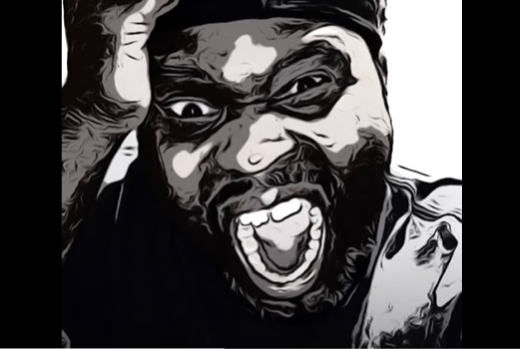PRI// steps beyond the expected with FIVE MINUTES INTO THE FUTURE, a release built from makeshift percussion, haunted domestic spaces, and an unflinching study of otherness. In this interview, PRI// pulls back the curtain on the album’s creation—one that swaps studio sheen for the surreal acoustics of a Spanish cave house and the clatter of household objects. From the sharp commentary found in track titles to a commitment to archival storytelling, PRI// weaves historical context and personal experience into a body of work that demands more than a casual listen. With nods to horror cinema, Sophie Muller’s visual subversions, and a fascination with duality, PRI// discusses how the album pushes boundaries in theme, sound, and identity—challenging listeners to step out of their comfort zones and into an uncanny, emotionally charged world.
Welcome to A&R Factory, PRI// — it’s a pleasure to have you with us as you release FIVE MINUTES INTO THE FUTURE. Your new album tears through genre norms and conventions to present something as unsettling as it is intricate. Let’s talk about what went into building this world.
You’ve spoken about the domestic horror qualities in Little Boy Lost, and how you recorded using pots, coffee makers and door handles while in Spain. Did recording with such unorthodox materials shape the emotional tone of the album in ways you hadn’t anticipated?
It was a funny thing – I couldn’t afford to spend the money on the extra seat, it would mean taking a guitar or keyboard to Spain on the plane, so I wasn’t able to write anything. I thought it would be fine, but inspiration struck, and all I had was what was around the house. It turned out we were staying in this ‘cave house’, underground, and so the acoustics were already really different to begin with. I began improvising songs with everyday items which sounded good – like kettle pots, the door latch in the bathroom, the clay toothbrush holder. It was really exciting creatively.
You mention a focus on otherness throughout FIVE MINUTES INTO THE FUTURE. How did the concept evolve while you were putting together the record, and were there moments where the personal and political themes began to blur in unexpected ways?
There’s a clutch of songs about that theme (A Dead Baby, Boy Boy Summer, Ethnic Folklore) and it really coalesced with the visuals, on Instagram but also in the videos. The idea of a person of colour being in these elite institutions, primarily white spaces. What happens to that person’s personhood – does it morph or disappear completely? What remains after they leave?
The found-photo Instagram project featuring people like Dillibe Onyeama and John Blanke adds an archival layer to the release. How important is it for you to fuse historical context with personal narrative in your music and visuals?
I went to see Beyond The Bassline at the British Museum a couple of times and was gobsmacked to see John Blanke, who played in Henry VIII’s court group. I thought Wow, what was his story? It stayed with me the idea of his history. I also read Dillibe Onyeama’s book about his experience, which was inspirational
There’s a sharp commentary running through the album titles — Anorexic at a Wedding, What to Expect When You’re Expecting the Anti Christ, A Different Frying Pan. How do you approach naming your songs, and what role do these titles play in shaping how listeners encounter the tracks?
I rarely start with a title when writing. But it normally just happens as I am writing
You’ve cited a love of horror and referenced Sophie Muller’s videos as a stylistic touchstone. What specific films or visual works inspired the tone and setting of your videos?
Most of the references weirdly came from stuff I watched when I was really young. Too young really to be seeing stuff like Poltergeist and Eurythmics’ Savage video album- the personas of the suburban wife and the ID woman. Again, it’s the themes of duality which tap into the same part of ‘otherness’ and code switching. Very interested in the psychological toll of all that game playing
From the eerie, metallic ambience of NEVER REALLY HOME (ABUSE U 2) to the rawness of A LOVE CRIME, this album constantly shifts in energy. Was that dynamic variety intentional from the start, or did it come out of your recording environment?
I think with each release, I’ve become aware of the importance of the variety of tone. I think about sequencing the tracks more and more. How one song’s mood can drift into another. Fun fact: Stevie Nicks sequenced Rumours!
There’s a queering of narrative throughout the album and videos — how much does subversion play a part in your creative process, and do you see your work as a challenge to what the industry tends to present?
I don’t think in those terms but I am drawn to counter narratives, what’s going on beneath the surface.
With such a conceptually rich release, how do you hope listeners will engage with the album beyond the surface level of the songs?
I hope it touches them emotionally, that’s what I always wish for my work
Stream PRI// on Spotify now.
Interview by Amelia Vandergast




No Comments